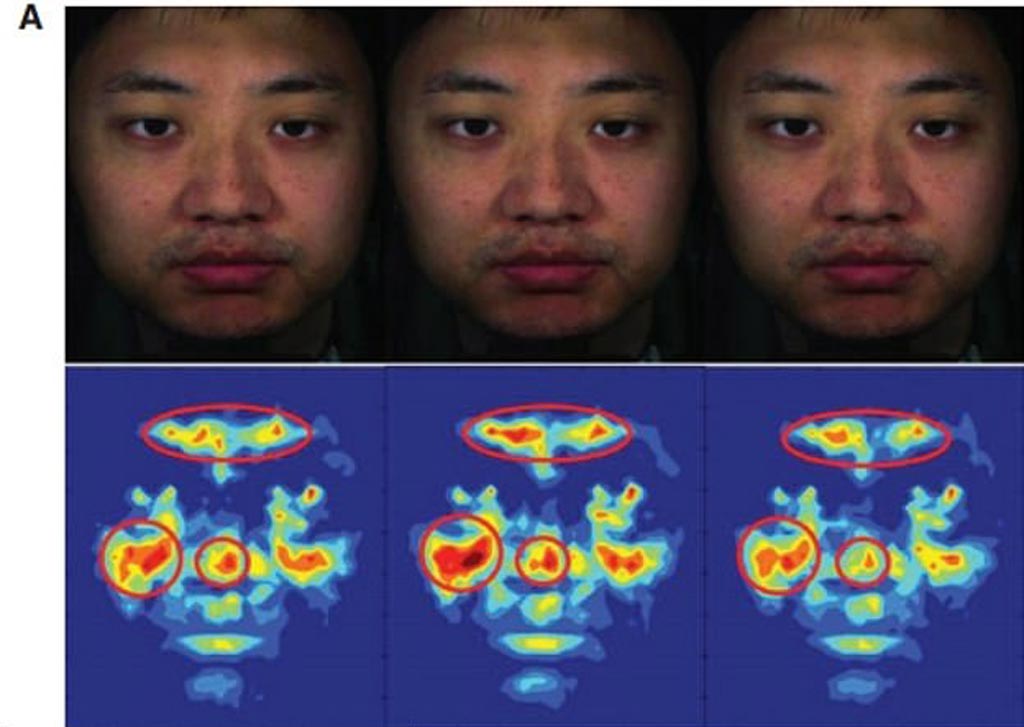Smartphone Technology Measures Blood Pressure Optically
By MedImaging International staff writers
Posted on 06 Sep 2019
Imaging facial blood flow patterns and analyzing them using artificial intelligence (AI) can predict blood pressure (BP) with 95% accuracy, according to a new study.Posted on 06 Sep 2019
Researchers at Hangzhou Normal University (Zhejiang, China) and the University of Toronto (UT; Canada) conducted a study that recruited 1,328 normotensive adults in order to develop a contactless technology--transdermal optical imaging--which can detect imperceptible facial blood flow changes using a smartphone camera. The technology works by detecting light reflected from blood vessels behind facial skin. Smartphone cameras are sensitive enough to pick up the specific shade of hemoglobin in the blood cells, and can thus track the blood’s density and motion in the cheeks, nose and forehead.

Image: A new study claims that specific areas of the human face can be used to optically measure BP (Photo courtesy of Kang Lee/ UT).
For the study, an advanced AI machine learning algorithm was used to create computational models that predicted reference systolic, diastolic, and pulse pressure from the facial blood flow data; 70% of the data set was used to train the models, and 30% to test and validate model performance. The results showed that on average, transdermal optical imaging predicted systolic blood pressure with nearly 95% accuracy, and diastolic blood pressure with pulse pressure at nearly 96% accuracy. The study was published on August 6, 2019, in Circulation: Cardiovascular Imaging.
“High blood pressure is a major contributor to cardiovascular disease, a leading cause of death and disability. To manage and prevent it, regular monitoring of one’s blood pressure is essential,” said senior author Professor Kang Lee, PhD, of the UT department of developmental neuroscience. “If future studies confirm our results and show this method can be used to measure blood pressures that are clinically high or low, we will have the option of a contactless and non-invasive method to monitor BP.”
In transdermal optical imaging, the face is divided into ten different regions of interests (ROIs) and data is obtained that reflect five independent components of cardiovascular activities associated with the face. The five components reflect different spatiotemporal dynamics of facial blood flow changes, which can be used to study human physiological and psychological activities.
Related Links:
Hangzhou Normal University
University of Toronto














